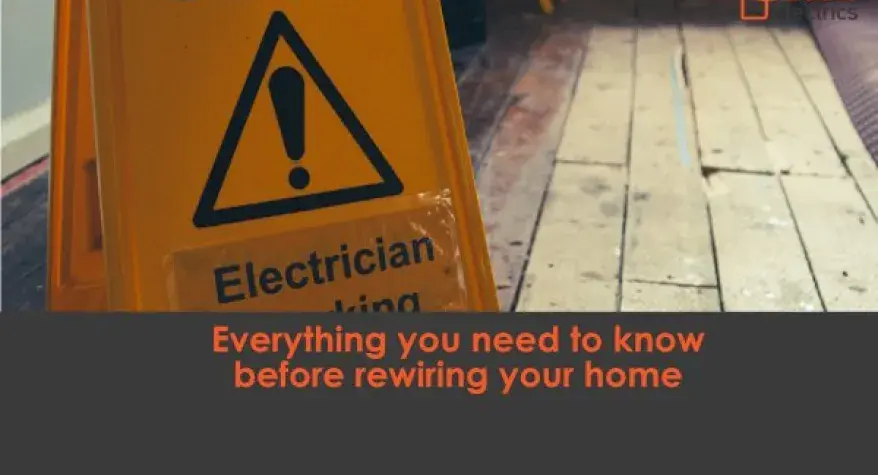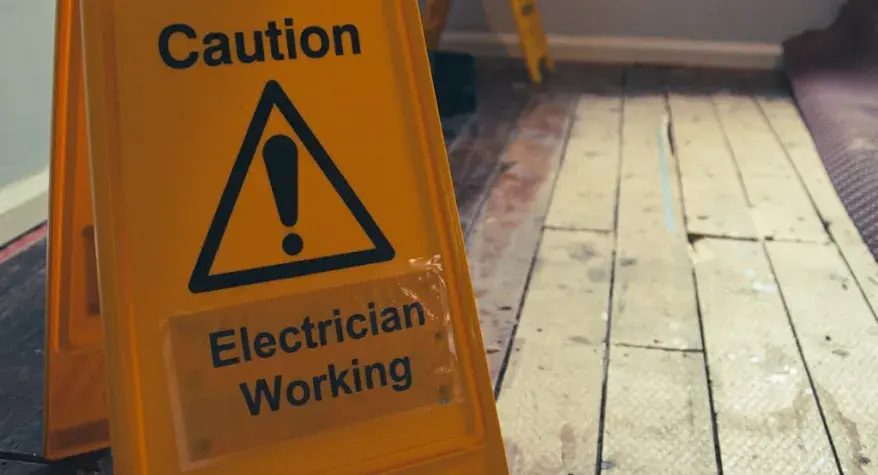Everything you need to know before rewiring your home
When do electrics need rewiring?
The big question "When is rewiring your home essential?!" The assumption often made is that if the lights and sockets work then all is well. However, this is not always the case. There is not a regulation to have your house rewired every certain number of years, but the average recommendation is 25 years. You should have your electrics checked every 10 years and every 5 years if your property is rented out. Do bear in mind this could be sooner if there is a change of tenancy.
How can you tell your home needs rewiring?
These are telltale signs that a rewire may be required, here are some to watch out for.
- Deterioration of sockets or other fittings
- A burning smell.
- Flickering lights.
- A buzzing or crackling noise, particularly if they come from the fuse board. (This could just be a sign the board needs changing, check out our recent blog on this)
- Chewed or damaged cables.
- Old cabling such as rubber or lead cable insulation. This means your cable insulation could be compromised.
- Your switches keep tripping, or your fuses keep blowing in the fuse board.
- If you have an old-fashioned fused board with just fuses and no switches. This would indicate that, if the rest of the electrical installation hasn’t been touched, then a rewire could be required.

Why should you rewire your home?
In addition to the safety of your family there are other benefits to having a rewire carried out.
1. Peace of mind
You can have peace of mind that all items are new, including the wiring. This alone can help reduce potential fire risk.
If the work is carried out by a registered Electrician, then you have the reassurance that your electrics are compliant with current wiring regulations and with part P building regulation. You will also be issued a certificate and letter from building control.
2. Save money
It can make your home more energy efficient. This can save you a lot of money!
Having a rewired house can add value and make it easier if you wish to sell or rent out. Prospective renters feel safer in a house that is up-to-date, and prospective buyers find these properties far more attractive.
3. Enjoy your home more
You can have a choice of all the new switches, sockets and light fittings during a rewire. High-end fixtures can significantly improve the look and feel of your home.
Also, it is a prime opportunity to have smart technology installed. This could include home security systems, video doorbells, light switches,WI-FI sockets and built-in sound systems.
How to plan when rewiring your home
If you think or have been given advice that your home does need a rewire then there are things you should bear in mind. There is no getting around the fact that a home rewire is a disruptive process, but with good planning and awareness headaches can be avoided.
1. Prepare well.
There is some preparation work that needs to be carried out before a rewire can take place. Make sure you:
- Lift any flooring, such as laminate or carpets.
- Move any furniture out of the way. Ideally a house should be empty for a rewire to take place but talk to your Electrician if this is not possible. S/he will be able to make suggestions about how to get around this. If a house is empty, your rewire will not take as long, nor be as costly.
- Lock away any valuables. It is not that your Electrician has sticky fingers! But the dirt that is kicked up by a rewire gets everywhere!
- Make sure your loft is clear and accessible
2. Stagger the workload
If you are renovating a house, a rewire should be completed at the same stage as any plumbing or work to the heating system, and certainly, before any plastering or cosmetic work is undertaken. However, you do not want too many tradespeople on-site at any one time, as this can delay the rewiring process and could lead to further costs.
If you are managing the work yourself, make sure you communicate with the various trades who are on site. If in doubt of how to proceed, give A Bathe Electrics a call.
3. Plan for two separate stages of work
Depending on timescale and the plan, an Electrician would carry out the first stage of a rewire known as the “First Fix”. This is putting all the new cables in place and positioning all the back boxes for the switches and sockets. It is then common practice that the plastering and decorating can take place.
After this, the electrician can return to carry out what is known as the “Second Fix”. This would be installing the switches, sockets, lights, and fittings and then installing the fuse board complete with testing and certification. It is possible to have these stages carried out straight after each other, but this will depend on your situation. Again, if in doubt then contact A Bathe Electrics.
If you are interested in having a conversation about rewiring your home, contact us for a free consultation.





